Samsung The Frame (2024) is not just an ordinary television that you could put in the corner and forget about after two days. Here, it's immediately evident that the manufacturer focused on something beyond just displaying movies. First, the "Art" mode catches the eye – with just a few clicks, we can turn The Frame into a digital gallery, showcasing artworks that, combined with the matte panel, truly resemble a real painting in a frame. And speaking of the frame, we have the option to customize its color to perfectly match our interior. Additionally, the package includes a wall mount, allowing the TV to be hung practically "flat," which further enhances the impression of engaging with a picture rather than a typical screen. The matte panel provides excellent protection against light reflections, which, paired with high brightness (650 cd/m²), works well in full sunlight. Moreover, we have a VA panel with quite decent contrast and a refresh rate of 120 Hz, so when watching sports or playing dynamic titles, everything appears really smooth and pleasant to the eye. If we add a gaming features package – VRR, ALLM, and HGiG – it becomes clear that Samsung also thought of console and PC fans. As a result, The Frame can be both a picturesque decoration for the living room and a quite sensible gaming monitor. The aforementioned One Connect is another handy gadget – thanks to it, we can hide all cables in one place, pulling only a thin wire connecting the TV to this magical box. If we like order, this is a solution made for us. Another advantage is the Tizen system – user-friendly, fast, and full of applications. We might not find absolutely everything in it (e.g., the Tidal app), but it still offers a wide range of options for searching new streaming platforms. Of course, there’s no rose without thorns. The lack of local dimming is noticeable in dark scenes, where black becomes less defined. We also have to remember that there is only one HDMI 2.1 port, so if we want to connect more devices in 4K and 120 Hz, we might feel limited. Additionally, viewing angles are rather average, so it's better for the most important viewer (i.e., us) to sit directly in front of the TV. For Dolby Vision fans, this also won’t be the perfect choice, as The Frame only supports HDR10 and HDR10+. Moreover, the sound – like in most slim TVs – is mediocre, so it's worth considering a soundbar if we care about clearer bass and a bit deeper sound. Despite these weaker points, The Frame still leaves a great impression. It is striking, stylish, and versatile – suitable for watching the latest hits as well as displaying reproductions of paintings on the wall. If we care about a unique appearance, high brightness, and at the same time want to play something with low input lag, this model will be a home run. And although it may not be the leader in terms of cost-effectiveness or a technological "monster" in terms of picture quality, it has something that is simply likable. It’s a piece of equipment that stands out with its unique character and can fit into any interior, attracting attention both in TV mode and as a digital art gallery.
- Matching (Score)
- Our verdict
- TV appearance
- Where to buy
- Contrast and black detail
- HDR effect quality
- Factory color reproduction
- Color reproduction after calibration
- Smoothness of tonal transitions
- Image scaling and smoothness of tonal transitions
- Blur and motion smoothness
- Console compatibility and gaming features
- Input lag
- Compatibility with PC
- Viewing angles
- TV efficiency during daytime
- Details about the matrix
- TV features
- Apps
- Playing files from USB
- Sound
Samsung The Frame LS03D vs TCL C6K
Direct compare
Check the best price offer:
Samsung The Frame LS03DThe Frame / LS03D
C6K / C69K / Q6C


Panel type: LCD VA
Resolution: 3840x2160
System: Tizen
Model year: 2024
Complete the survey to find out the result

Panel type: LCD VA
Resolution: 3840x2160
System: Google TV
Model year: 2025
Complete the survey to find out the result

Overall rating
7.0
7.1
Movies and series in UHD quality
6.9
6.7
Classic TV, YouTube
6.5
6.6
Sports broadcasts (TV and apps)
6.2
6.3
Gaming on console
8.2
8.4
TV as a computer monitor
7.6
8.6
Watching in bright light
6.5
6.4
Utility functions
7.8
7.0
Apps
8.7
9.6
Sound quality
5.8
6.5
Complete the survey to find out what fits your preferences
Advantages
Unique design and "Art" mode - the television fits perfectly into interiors and serves as a digital frame for images
Matte screen - effectively reduces glare
Possibility of personalizing the TV frames - adapting the appearance to the interior
Dedicated wall mounts included (Value approx. 400 PLN) - the TV can be mounted almost flush to the wall
High brightness (650 cd/m²) - excellent visibility even in well-lit rooms
VA matrix - decent contrast
Good motion fluency - 120Hz*
Support for VRR, ALLM, and HGiG - a full set of gaming features
Smooth tonal transitions - one of the best results in this category among tested TVs
One Connect module - minimizes cable clutter, ensuring tidiness
Tizen system - responsive, intuitive
*Does not apply to the 43 and 50 inch variants (60Hz)
Very good contrast and black level: VA panel and MINI-LED backlighting
Good motion fluidity: High refresh rate of 144Hz
Decent panel brightness
Many features for gamers: VRR, ALLM, HDMI 2.1, HGiG
Additional mode for PC gamers: 240Hz
Google TV system with a wide selection of apps
Support for multiple HDR formats including Dolby Vision
Support for Dolby Atmos and DTS
Very attractive price
Disadvantages
Lack of local dimming – affects the quality of black, especially in dark scenes
Average viewing angles – the image loses quality when viewed at a greater angle
Average sound quality – flat sound without depth
Limited number of HDMI 2.1 ports – only one port supports full 4K@120 Hz
No Dolby Vision – the TV only supports HDR10 and HDR10+
Managing the backlighting could be better
Language errors in the system
Our verdict
The TCL C6K is a television for those who want to combine gaming and watching movies with good contrast, without spending a fortune. Thanks to the VA panel with Mini-LED backlighting, blacks are deep and contrast is high, so evening screenings look truly spectacular. Additionally, it offers decent brightness, which, combined with Dolby Vision, makes movies take on a cinematic character. The fluidity of the image is also significant – the 144Hz refresh rate does wonders for sports and dynamic games, and gamers get a full package of extras: VRR, ALLM, HDMI 2.1, HGiG, and even a 240 Hz mode in PC. On a daily basis, the television is powered by Google TV, which offers a ton of apps and the Gemini AI voice assistant, making operation convenient and flexible. It's also worth mentioning the sound – support for Dolby Atmos and DTS gives the impression that the equipment is ready not just for gaming. As is often the case, there are a few things that could be improved. The backlighting in difficult scenes can lose details or wash out blacks, and Polish translations in the menu can be so clumsy that one has to wonder what they actually mean. Despite this, the overall performance holds up very well, and given the price, the TCL C6K could be one of the more interesting choices for someone looking for a versatile television for movies, sports, and games. Especially when a good promotion comes along – and when TCL traditionally polishes up the details in updates.
TV appearance





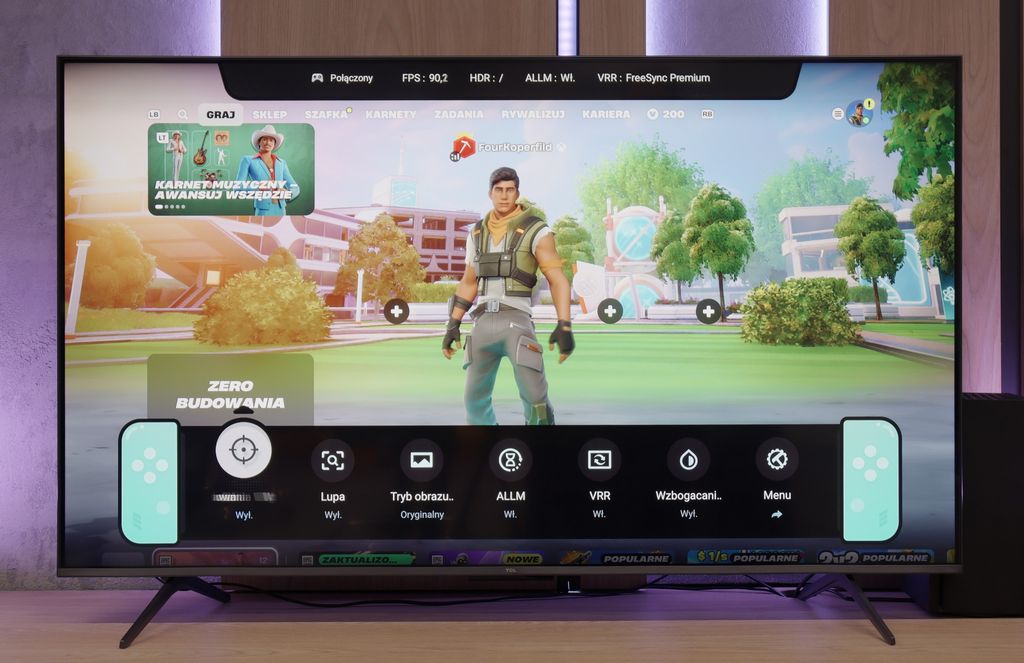
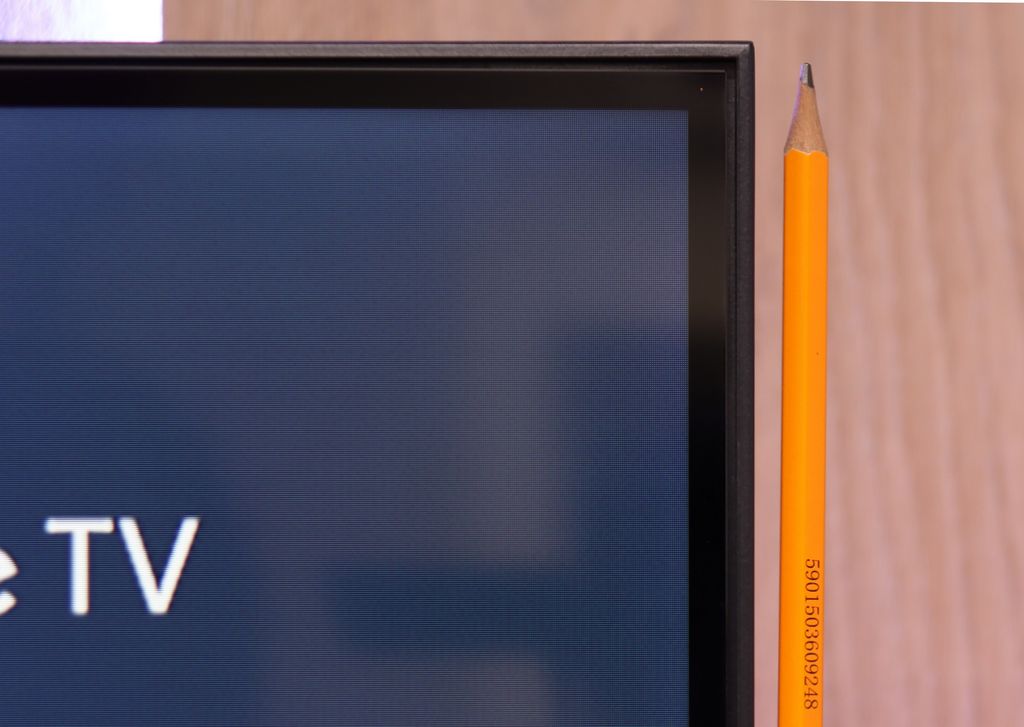
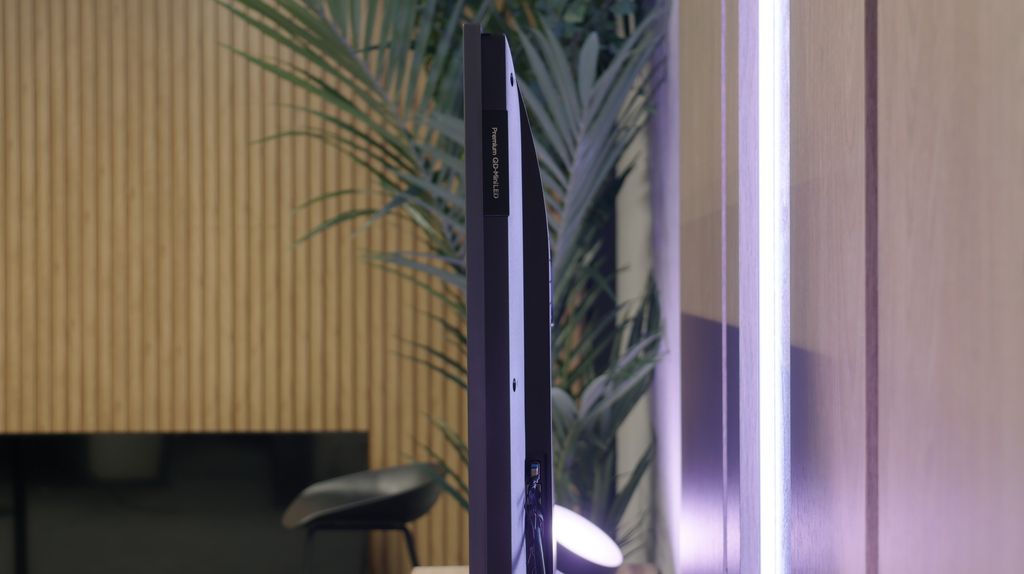
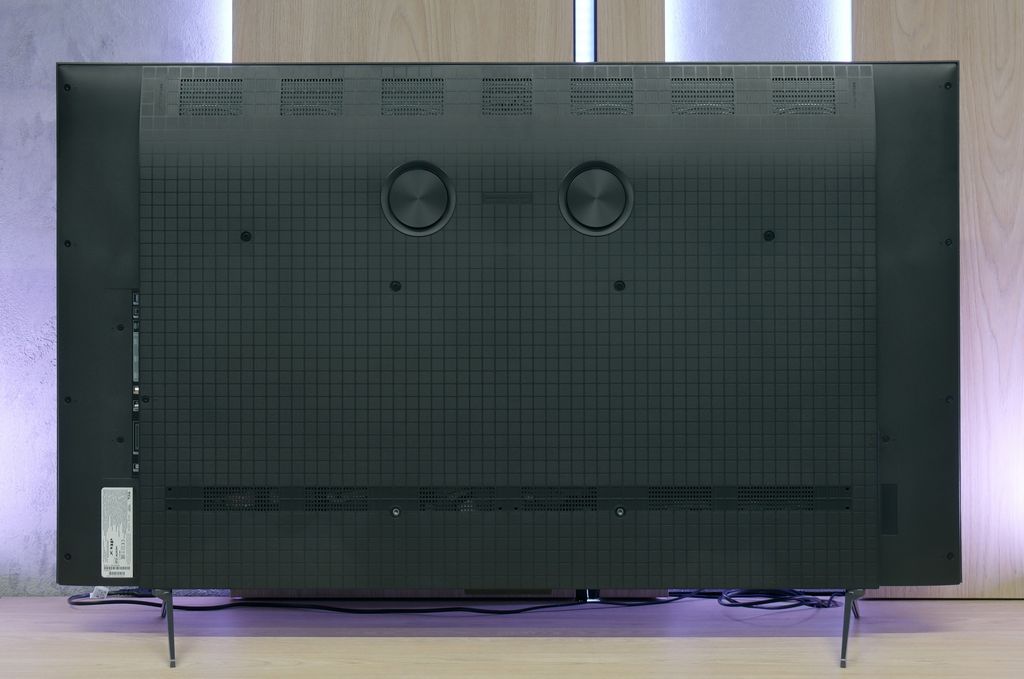
Contrast and black detail
5.6/10
7.3/10
Local dimming function: No
Local dimming function: Yes, number of zones: 180 (10 x 18)
Contrast:

Result
4,200:1

Result
4,800:1

Result
5,100:1

Result
5,300:1

Result
3,850:1

Result
114,000:1

Result
17,300:1

Result
16,200:1

Result
9,900:1

Result
4,850:1
Halo effect and black detail visibility:


The Frame uses a VA panel, which in itself provides quite high contrast. In our tests, the results ranged from 4000 to 5000:1, which will be quite sufficient for most users. However, the lack of local dimming becomes noticeable, especially on more demanding test screens. In dark scenes, one can notice that the black has a slight navy hue. During the day or in a well-lit room, this won't be an issue, but during an evening viewing, more discerning viewers may feel a slight disappointment.
The TCL C6K is based on a VA matrix, more specifically HVA produced by TCL CSOT, which already provides a solid native contrast of 6000–7000:1 without the use of local dimming. However, the real strength of this model is the Mini-LED backlighting with the ability to dim individual zones. In the tested 55-inch version, we counted about 180 of them, and as the diagonal increases, this number naturally rises. For a television in this price segment, the contrast is truly impressive. In simpler film scenes, such as excerpts from "Oblivion," it performs excellently, and shots completely filled with black make a great impression. Of course, due to the nature of Mini-LED technology, it’s not always possible to avoid issues – in more challenging frames with many bright details, halo effects or too strong dimming of some elements appear (regardless of local dimming settings). Nevertheless, the contrast can be considered a strong point of the C6K.
HDR effect quality
6.4/10
4.9/10
Luminance measurements in HDR:

Result
679 nit

Result
663 nit

Result
712 nit

Result
698 nit

Result
726 nit

Result
612 nit

Result
202 nit

Result
424 nit

Result
144 nit

Result
587 nit
Scene from the movie “Pan” (about 2800 nits)


Scene from the movie “Billy Lynn” (about 1100 nits)


Static HDR10


Dynamic: HDR10+
Dynamic: Dolby Vision


HDR luminance chart:
TCL C6K
Luminancja HDR
Luminance of RGB colors
Samsung The Frame LS03D
Luminancja HDR
Luminance of RGB colors
The Frame really handles brightness well. With results at the level of 700 nits, bright elements on the screen look impressive and detailed, whether they illuminate the entire screen or appear as small bright spots against a dark background. In more demanding scenes, like the fourth sequence from the movie Sicario 2, the blacks perform averagely, but we already discussed that in the section regarding contrast. However, when it comes to brightness – here the TV definitely performs well. An additional advantage is the quantum dot coating, i.e., QLED technology. Thanks to it, the color palette coverage has been improved, although The Frame does not stand out in this regard compared to the competition.
TCL C6K is a moderately bright TV that can showcase its full potential under the best cinematic conditions – the maximum brightness is around 600 nits. In scenes with large, intense light sources, the HDR effect can be really satisfying, providing a sense of cinematic brilliance. However, it should be noted that when managing the backlighting zones, there are situations where some elements become dimmed and sometimes can even become barely visible. It is clear that there is a lack of proper algorithm optimization here, although looking at the technical parameters in this price range, the design itself performs very well.
Factory color reproduction
7/10
5/10


Factory Mode
After calibration


Factory Mode
After calibration
Samsung offers several picture modes in its TVs, but without a doubt, the Filmmaker Mode is the one that should provide the most natural representation of content. Unfortunately, as is often the case with mass production, the differences between units can be significant, and our tested model did not escape a few problems.
In the case of SDR content, the white balance heavily leaned towards red, with a slight boost in blue. This effect was particularly visible in comparison photos – in the example of a photograph with a boy, whose face was almost unnaturally flushed. The gamma, or brightness characteristic, also did not perform perfectly – the image was slightly brightened, which took away its depth.
In 4K HDR content, the white balance was again dominated by red, this time combined with green. Meanwhile, blue clearly lost intensity, which could be easily noticed on the Color Checker palette, where the colors began to "run away" in the wrong direction. The EOTF curve, responsible for brightness in HDR content, showed that the TV tends to excessively brighten the image, especially in the darkest elements of scenes.
Overall, although it did not look tragic, it definitely needed correction. Fortunately, Samsung offers extensive calibration options, which provide an opportunity for significant image improvement. Therefore, we proceeded with professional calibration to extract the full potential of this TV.
This year's TCL televisions feature a Filmmaker mode, and it must be admitted that it is definitely the best choice straight out of the box. This is the mode we recommend for everyday watching of movies and series. Unfortunately, as is often the case, the best doesn't mean perfect. In the case of SDR content, the image was too warm because the red was strongly emphasized in the white balance. On the other hand, with HDR content, we had the opposite impression – the image became cooler than it should have been due to excess blue. Additionally, the brightness characteristic sometimes led to highlights being blown out. In practice, this resulted in quite noticeable color test inaccuracies that are hard to accept in a mode advertised as "by the creators."
Color reproduction after calibration
8.1/10
7.5/10




After professional calibration, the Filmmaker Mode shows its full potential. The white balance in HD content is exemplary – an error level of 0.5 indicates almost perfect color reproduction precision. The image now looks natural, and the colors are exactly as they should be. In 4K HDR content, the effect is not as perfect, but it still maintains a really high level. The colors are vibrant, well-saturated, and the overall image quality is impressive.
So where does the problem arise, if we praise the color reproduction so much? Unfortunately, the overall experience is disrupted by the brightness characteristic. The gamma in HD content looks decent, but in 4K HDR it's not as good. The EOTF curve shows that the TV excessively brightens certain parts of the image, which is a result of design limitations. The lack of local dimming means that the TV cannot precisely control the differences between the brightest and darkest areas of the screen. This is a barrier that simply cannot be overcome in this model.
Nevertheless, after calibration, The Frame offers excellent color reproduction, especially in HD content, and the overall appearance is much better than before the settings correction.
Thanks to the white balance correction, it was possible to significantly reduce the C6K's tendency to distort colors, which resulted in a very good final outcome. After calibration, we will no longer observe the effect of excessive warming of scenes in SDR or overly cooling the image in HDR. However, it is worth taking a closer look at the brightness characteristics. In SDR content, there are few complaints – the image looks really good, especially in older movies, TV shows, or materials from YouTube. This is much worse for HDR content. Analysis of the EOTF curve suggests that everything is fine, but in practice (EOTF in films), the limitations of the construction become apparent. The TV tends to overly brighten the smallest parts of the frame, and in other situations, it can dim the entire scene too much. The effect of calibration is therefore evident, and in terms of color, the C6K has gained quite a lot, but certain limitations arising from local dimming and, in fact, its management by the C6K simply cannot be overcome.
Smoothness of tonal transitions
9.7/10
9.5/10












This is one of the best TVs we have had the opportunity to test in terms of the smoothness of tonal transitions. Any potential imperfections are so minor that you really have to strain your eyes to notice them. They are subtle enough that we only deducted a symbolic fraction of points in this category. Undoubtedly, this is one of the greatest advantages of this model. It's possible that such a good effect is partly due to the matte coating of the screen, which gently masks any irregularities in color gradation. The smoothness of tonal transitions in The Frame is at a level that will satisfy even exceptionally demanding users. Kudos to the LS03D!
The transitions between colors in the C6K are very smooth, and it's hard to find any banding. The image looks natural, and any minor imperfections can only be noticed on bright test patterns – and that with really careful viewing. In everyday use, the effect is simply great, and one can confidently say that in this category, the C6K performs exceptionally well.
Image scaling and smoothness of tonal transitions
7.1/10
5/10
Smooth transition function


Image without overscan on the SD signal


It was time to check how The Frame handles older, lower-quality materials. We already know that the smoothness of tonal transitions is very high here, so we were curious to see how the TV would manage their smoothing.
The noise reduction feature in the "Standard" setting performs well – tonal transitions are noticeably smoothed out, and the image does not lose too much detail. However, it's worth noting that this effect also smooths out film grain, so its use will be a matter of individual preference.
When it comes to image scaling, the TV also performed really well. The tested frame was solid – the model was rendered correctly, with clear details. The branches in the background, although slightly jagged in places, generally look natural and do not stand out as a flaw.
The TCL C6K performs quite well in terms of scaling. Lower quality materials look acceptable, and the lack of overscan issues means that the image is displayed in full, without cropping. However, one cannot expect miracles – content of very low quality will not gain new life here, as the image processor has its limitations. On thin lines or details, the characteristic tearing is visible, which reveals the absence of advanced image enhancement algorithms. It is also a pity that the C6K lacks the feature for smoothing tonal transitions – in older films or video materials, color banding can be noticeable and may be bothersome during long viewing sessions.
Blur and motion smoothness
6.4/10
7.3/10

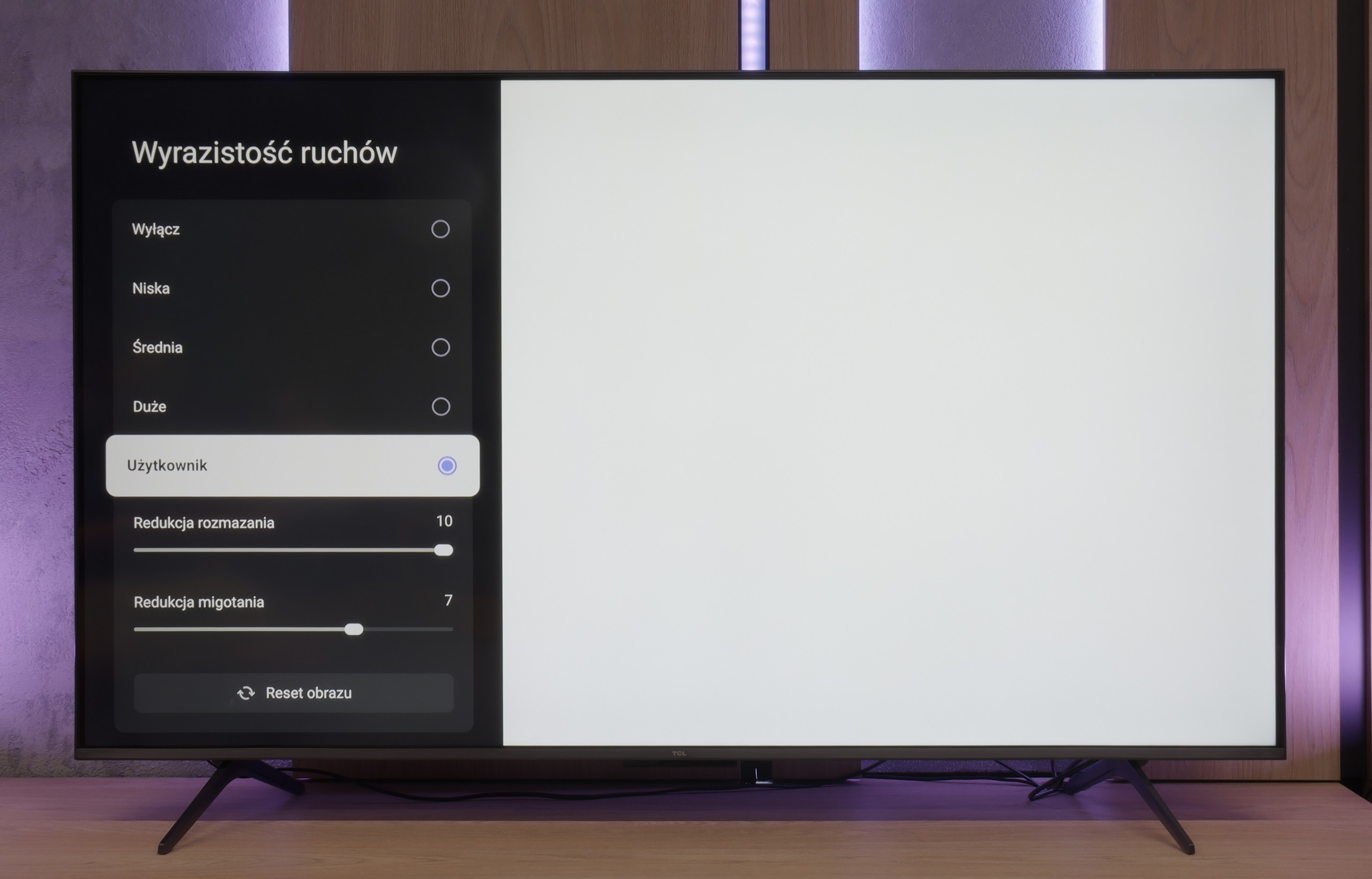
Blur (native resolution, maximum refresh rate):






Blur (BFI function enabled):
Image flickers in this mode



First of all, it is worth noting that the model we tested in 55 inches, just like the 65, 75, and 85-inch versions, is equipped with a 120 Hz panel. Unfortunately, the 43 and 50-inch variants of this series offer only 60 Hz panels, which is worth considering when making a purchase. As for improving motion fluidity, the TV offers a feature called "Picture Clarity." This is a classic motion smoother that gives users the ability to adjust it using two sliders:
Motion Blurring Reduction – this is responsible for sharpening the image during dynamic scenes. The higher the value, the less blur during rapid camera movement or moving objects. However, overly aggressive settings can make the image look unnatural and start to resemble a “soap opera”.
Judder Reduction – this slider affects the smoothness of frame playback, particularly in materials with a lower frame rate, such as films (24 fps). Higher settings can smooth out motion but can also lead to an excessive "plasticky" effect on the image.
Both sliders operate on a scale from 0 to 10, allowing for precise adjustment of the effect to one’s own preferences. It is worth experimenting with the settings to find the perfect balance between fluidity and the natural appearance of the image. We recommend setting them as shown in the picture.
TCL C6K features a 144 Hz panel, which is a significant advantage in this price range. This is an important step forward compared to the previous model C655 PRO, which offered only 60 Hz at 4K. The difference is especially noticeable when watching sports or playing games – the ball, athletes, or fast action in a game are displayed more clearly and without losing details. An interesting fact is also the ability of the panel to operate at 240 Hz, which the manufacturer does not mention in official materials. We will return to this topic when discussing the game mode for PC.
TCL also added a feature for movie watchers: "Motion Clarity," which allows you to adjust the image to your preferences using two simple sliders. You can keep the movie frame visible or opt for a very smooth, almost theatrical effect. This way, everyone can find settings tailored to their taste.
Console compatibility and gaming features
8.8/10
9.8/10
- ALLM
- VRR
- VRR range48 - 120Hz48 - 240Hz
- Dolby Vision Game Mode
- Correct implementation of HGIG
- 1080p@120Hz
- 1440p@120Hz
- 4K@120Hz
- Game bar

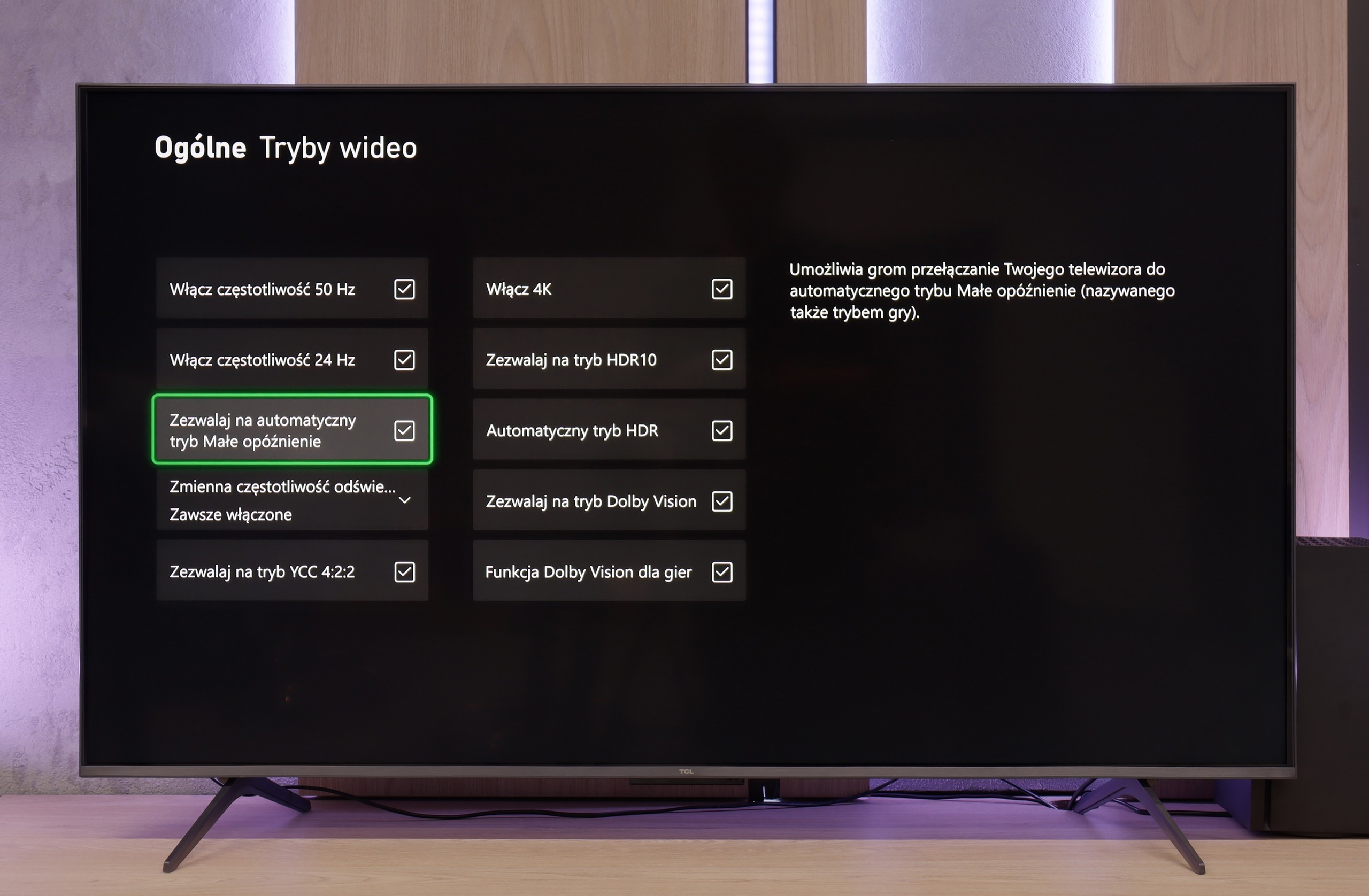

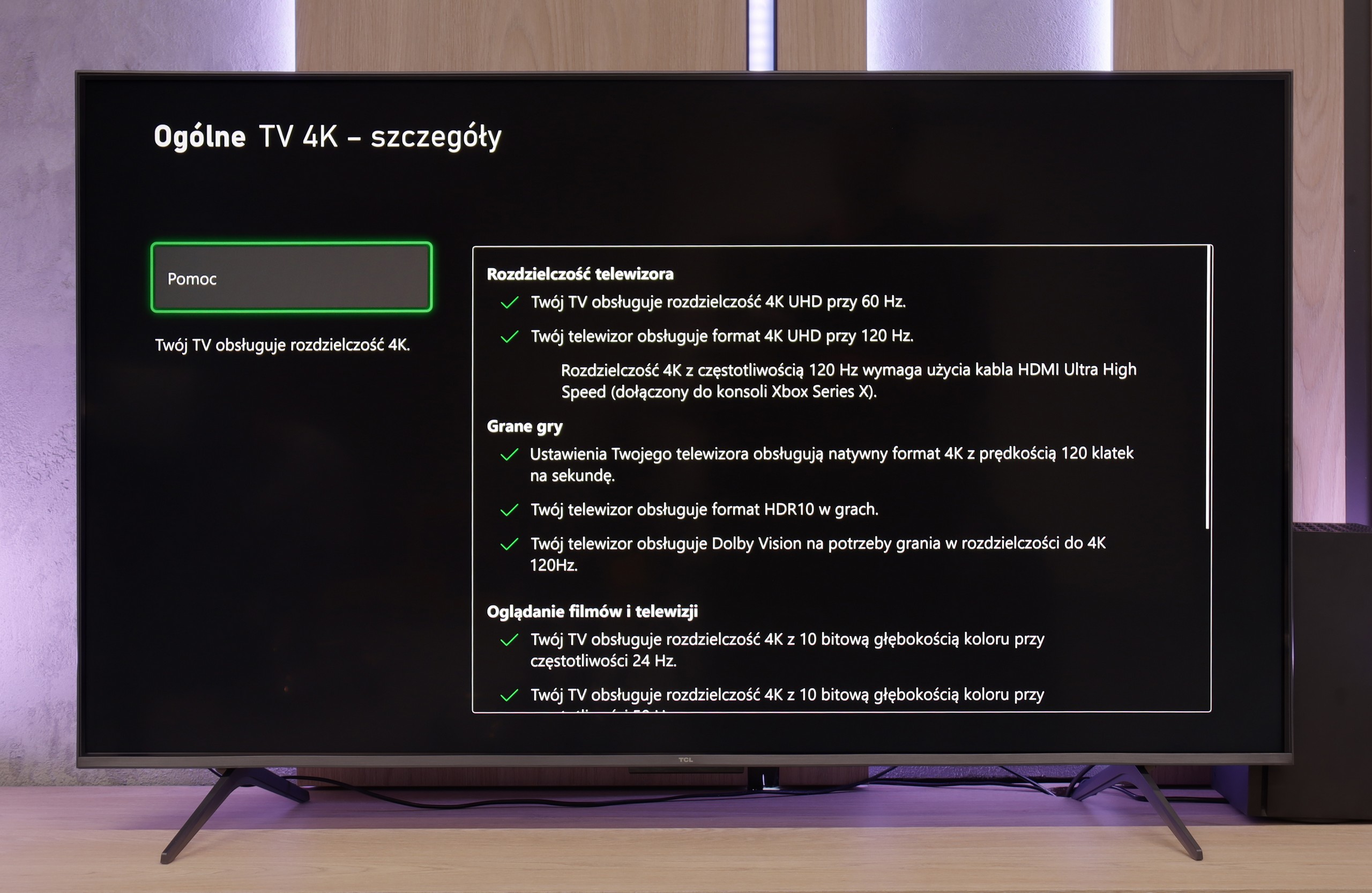

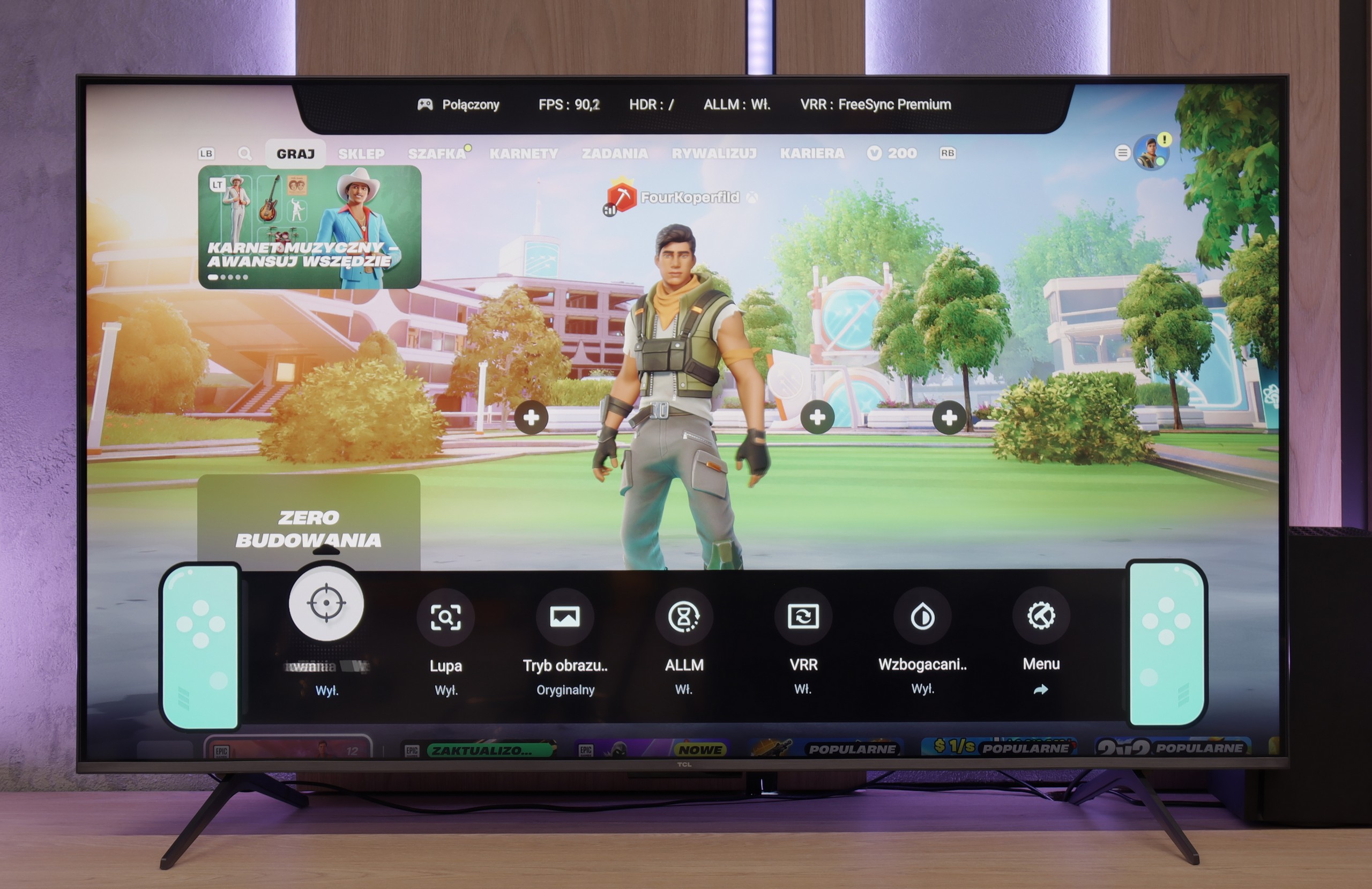


The Frame in version 2024 is equipped with four HDMI ports, but only one of them supports the 2.1 standard with a bandwidth of 40 Gb/s. This is an important piece of information if we plan to connect more than one device that requires a 4K@120 Hz signal – for example, two consoles or a console and a gaming PC. In terms of gaming features, The Frame truly has a lot to offer. We find ALLM (Auto Low Latency Mode), VRR (Variable Refresh Rate), and HGiG. It is worth emphasizing that HGiG has been very well implemented here, which is particularly important since the TV does not support Dolby Vision in games (which is only available on Xbox consoles). In this case, HGiG proves to be a better standard for gaming. Samsung has not forgotten about features that enhance the gaming experience. Game Bar is an advanced panel for gamers that allows for quick adjustment of screen settings without the need to sift through the TV menu. We can even change the aspect ratio from 16:9 to cinematic 21:9, which for some gamers can be a significant advantage. However, Samsung's biggest ace up its sleeve is the Game Motion Plus feature. This is a special smoother dedicated to games, which adds extra frames of animation without significantly impacting input lag. The effect is really noticeable – the image appears much smoother, which fans of dynamic titles will particularly appreciate. In summary – Samsung The Frame is a television that offers a solid set of features for gamers. Although the limitation to one HDMI 2.1 port may be a downside, the rest of the solutions make gaming on this TV a truly enjoyable experience.
The TCL C6K is a TV that can confidently be called equipment designed for gamers. Here we have 4K at 144 Hz, VRR support, automatic game mode (ALLM), and Dolby Vision Gaming. Additionally, there's a practical Game Bar, a panel with the most important settings readily available – useful when we want to quickly change something during gameplay (e.g., screen aspect ratio: Yes, that’s possible!). The wide VRR range, reaching up to 240 Hz, deserves attention. However, this is mainly an option for PC gamers who drop below the native 4K resolution. Then the TV can spread its wings and show additional smoothness, especially in fast-paced e-sports titles. In the case of consoles, we stick to the classic limit of 120 Hz, but the possibilities are still quite broad. The only drawback is a slight ghosting that can sometimes be seen in dynamic scenes. Other than that, the C6K offers everything gamers expect from a TV.
Input lag
10/10
9.7/10
SDR
HDR
Dolby Vision
In terms of latency, The Frame really impresses. 13 ms with 60 Hz content and 8 ms with 120 Hz are results that will satisfy even the most demanding gamers. Such low values make the reactions to controller movements almost instantaneous. In dynamic games like shooters or racing, every fraction of a second matters – here The Frame performs excellently.
In terms of input lag, the TCL C6K performs excellently. With 120 Hz content, the delay is around 10 ms, and at times even less. This is a level at which the response is practically instantaneous, and it's hard to find any objections. For 60 Hz materials, the result is about 18 ms – still a very good result, more than sufficient for comfortable gaming.
Compatibility with PC
7.6/10
8.6/10

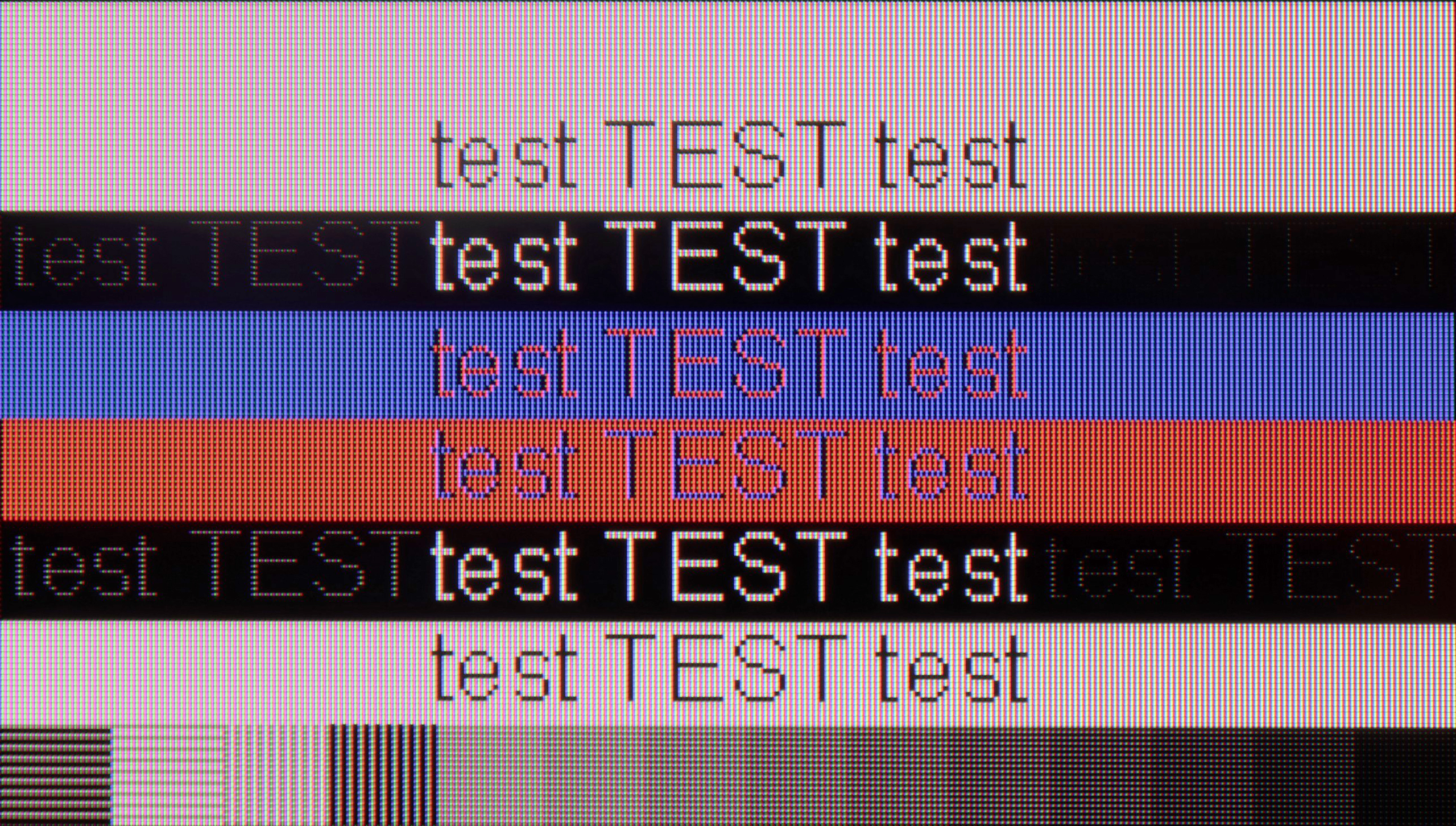
Using a computer on The Frame is truly a pleasant experience. The fonts are clear and well-rendered thanks to the 4:4:4 chroma support. There is no blurring or fuzziness that often appears in cheaper televisions. Of course, if someone scrutinizes small texts, they may notice minimal imperfections, but it's really a minor issue that doesn't interfere with everyday work. It's also suitable for PC gaming. The 120 Hz panel, support for G-Sync, and truly low input lag make games run smoothly and without delays.
After connecting the TCL C6K to a computer, it performs excellently. At native resolution, we have 4K at 144 Hz, and if we lower the resolution, we can even achieve 240 Hz. Additionally, the television is compatible with Nvidia and AMD graphics cards – supporting both G-Sync and FreeSync. It's also hard to find fault with it for office work. Fonts are sharp and readable thanks to 4:4:4 chroma support, and any minor imperfections are so small that they simply go unnoticed in normal use.
Viewing angles
3.3/10
3/10
The viewing angles on The Frame are average, which is typical for a VA panel. And here comes a bit of a snag – this television is supposed to serve as a display for images and works of art, which are not always viewed head-on. When viewed at an angle, colors start to lose their intensity, and black turns into shades of gray. This is not at a level that completely ruins the experience, but if the TV is placed in a position where it will often be viewed from the side, the effect may be noticeable. It's a pity because better viewing angles would be a significant advantage in a TV intended for such purposes.
In the TCL C6K, the viewing angles are typical for a VA matrix. Sitting directly in front, the image looks very good, but any shift to the side results in a noticeable drop in color saturation and brightness. The difference is particularly visible in colorful scenes – the colors become washed out, and the contrast loses its depth. Compared to IPS panels, this is clearly a weaker result, although the trade-off is better black levels and higher native contrast "something for something."
TV efficiency during daytime
6.5/10
6.4/10

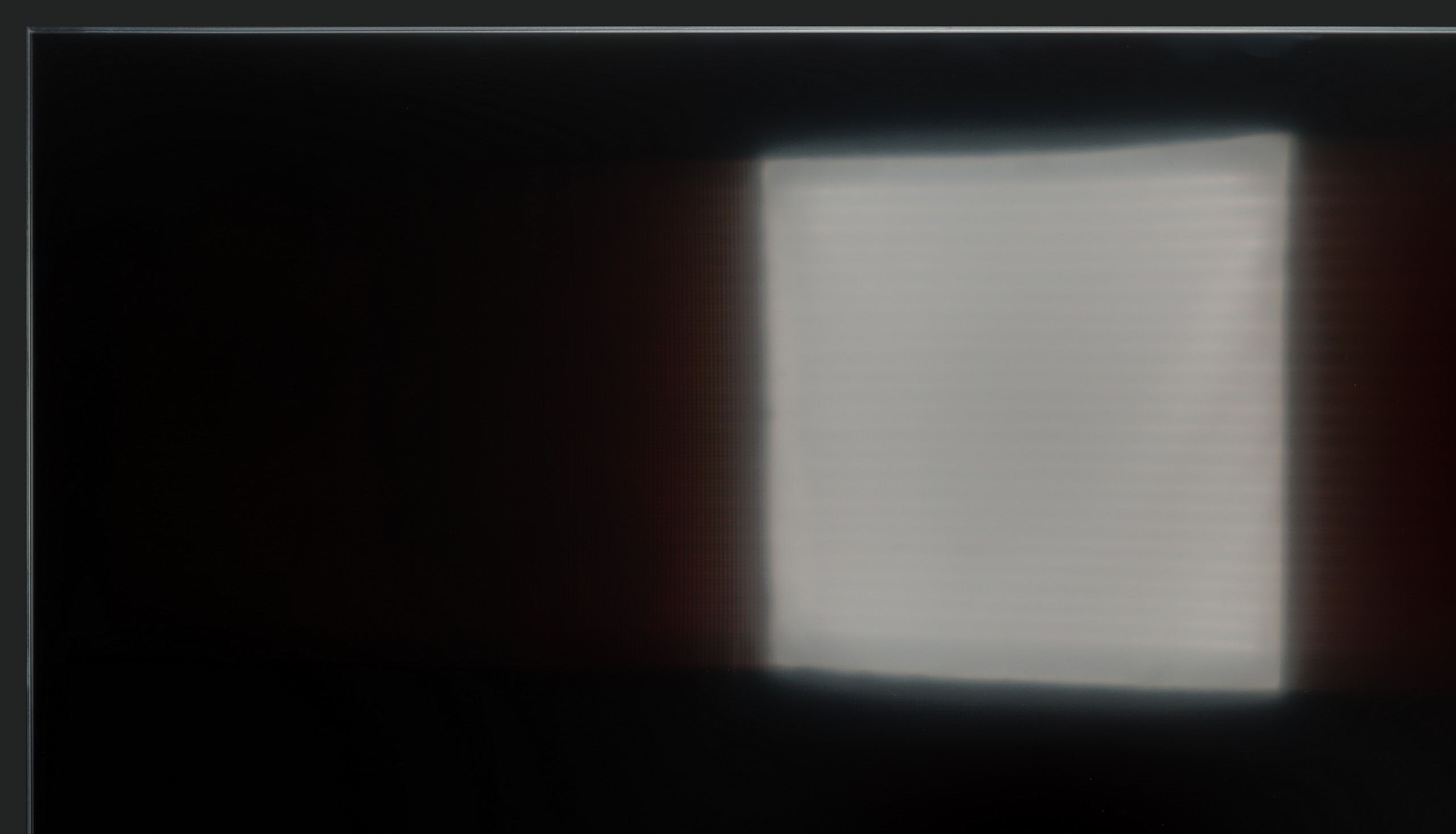


Matrix brightness
Average luminance SDR
TCL C6K: 532 cd/m2
Samsung The Frame LS03D : 645 cd/m2
The Frame is equipped with a matte display that manages to effectively suppress direct light reflections. As a result, even in a brightly lit room, the image remains readable, and reflections do not interfere with viewing. Of course, as is usually the case with matte coatings, there is a trade-off – colors lose some intensity, and black seems more faded during the day. Fortunately, the television compensates for this with a brightness level of 650 cd/m². This ensures that the image is bright, clear, and well visible even in a heavily lit room.
TCL C6K performs quite well in bright lighting conditions. The panel offers decent brightness – in SDR content, it reaches around 550 nits, which allows for comfortable television viewing in an average living room, even on days with strong light coming through the windows. This means that daytime viewing does not require complete darkening of the room. It's also worth noting that the screen coating does a good job of reducing reflections, so the television doesn't turn into a "mirror" even in bright light. However, this is not the level of top models with more advanced anti-reflective coatings – in very challenging conditions, such as with large windows, reflections will be noticeable.
Details about the matrix
Subpixel Structure:

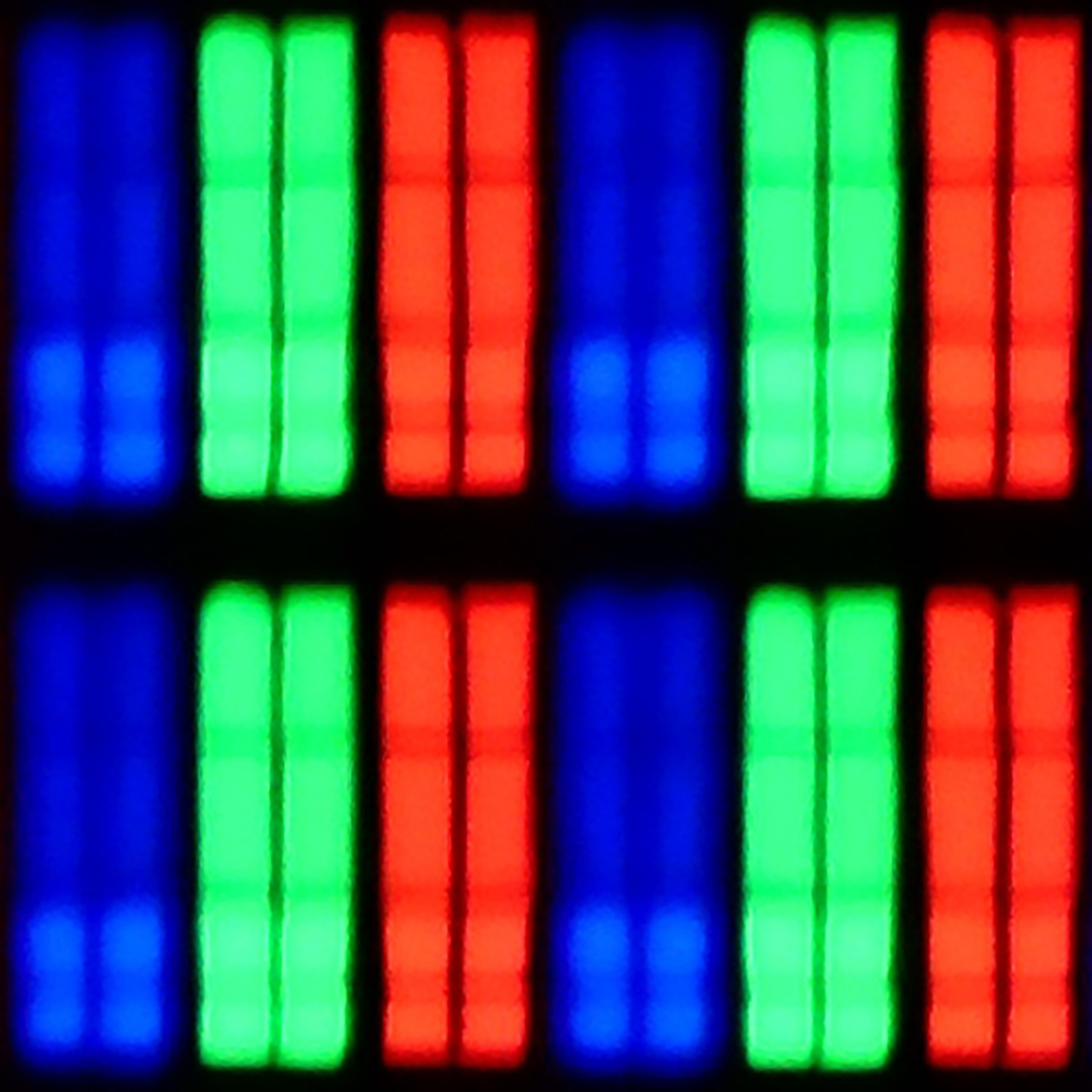
Panel uniformity:


Samsung The Frame LS03D
TCL C6K
TV features
7.8/10
7/10
- HDMI inputs3 x HDMI 2.0, 1 x HDMI 2.1 40Gbps2 x HDMI 2.0, 2 x HDMI 2.1 48Gbps
- OutputsToslink (Optical audio), eARC (HDMI), ARC (HDMI)Toslink (Optical audio), eARC (HDMI), ARC (HDMI)
- Network InterfacesWi-Fi 2.4GHz, Wi-Fi 5GHz, Ethernet (LAN) 100MbpsWi-Fi 2.4GHz, Wi-Fi 5GHz, Ethernet (LAN) 100Mbps
- TV receptionDVB-T, DVB-T2, DVB-S, DVB-S2, DVB-CDVB-T, DVB-T2, DVB-S, DVB-S2, DVB-C
Classic features:
- Recording to USB (terrestrial TV)
- Recording programming
- Picture in Picture (PiP)
- RF remote control (no need to aim at the screen)
- Backlit remote control
- Teletext
- Audio only mode
- Possibility to connect Bluetooth headphones to the TV
- Possibility to simultaneously use Bluetooth headphones and the TV speaker
Smart features:
- AirPlay
- Screen mirroring (Windows Miracast)
- Wyszukiwanie głosowe
- Voice search in native language
- Ability to connect a keyboard and mouse




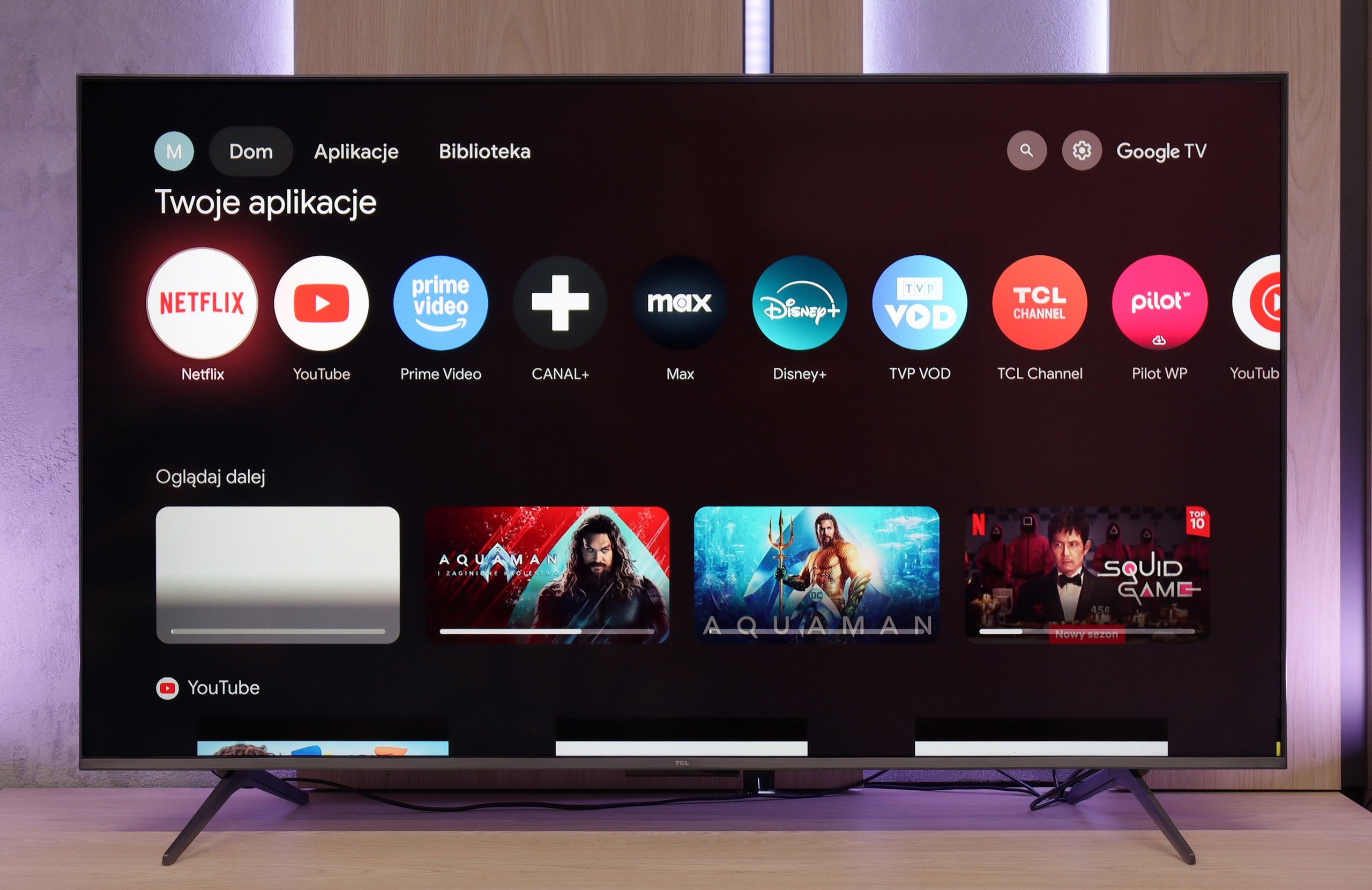
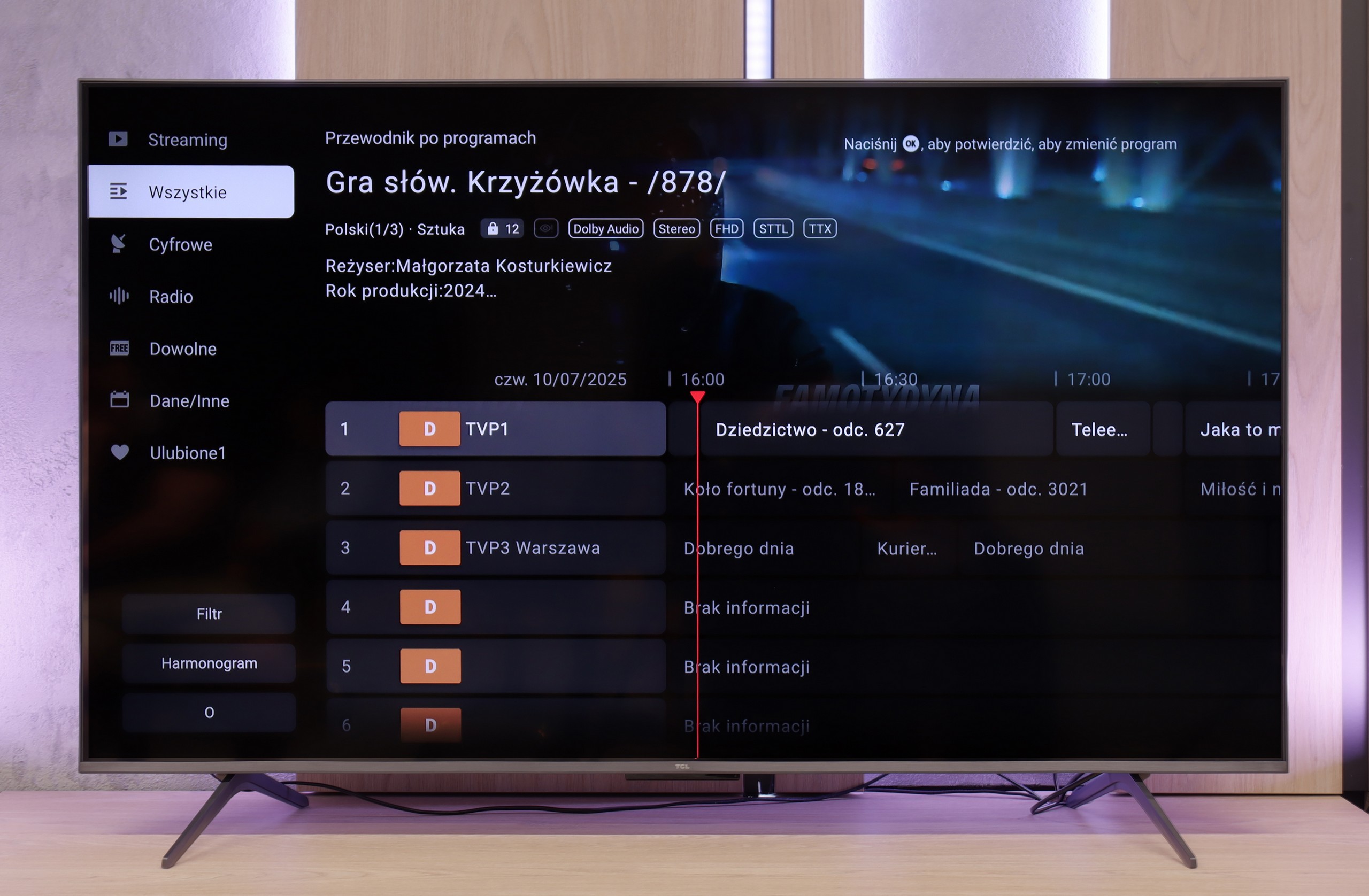
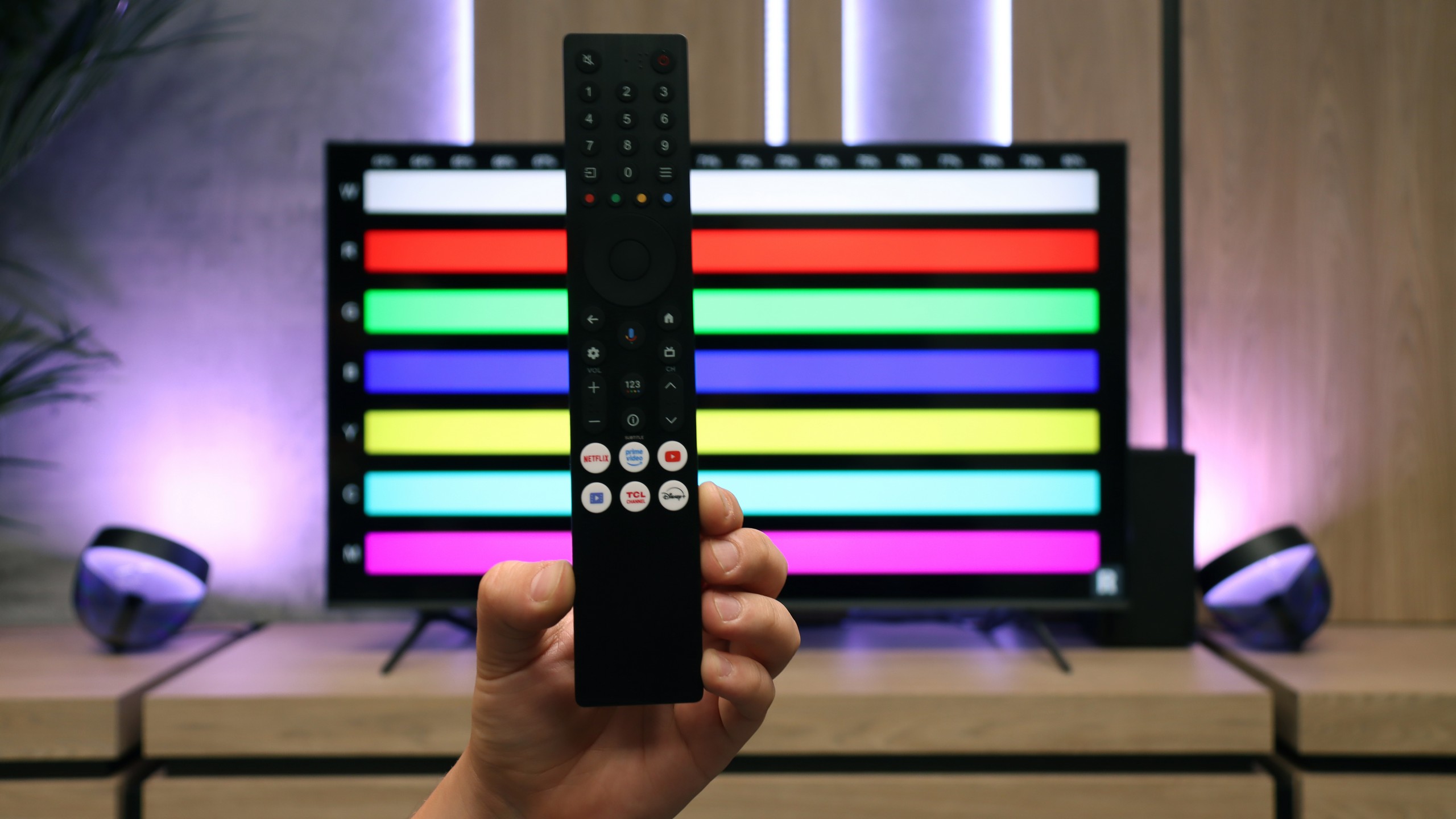
The Frame is a television that stands out from other models and is difficult to describe in a traditional way. Of course, we will find all the standard Smart TV features thanks to the Tizen system. The system works responsively, is extensive, and offers a wide selection of applications. The remote control supports voice commands in Polish, and we can connect additional devices via Bluetooth – just like in many other televisions. But this is not the essence of this model.
The greatest strength of The Frame is its design. The "Art" mode allows you to display thousands of high-resolution images, which, combined with the matte display, look truly exceptional. The effect is surprisingly realistic and hard to compare to any other television.
The frames may not be the thinnest on the market, but they can be customized in terms of color and style to perfectly match the interior. (Sold separately) And although the frames themselves are not ultra-thin, the entire construction is sleek and elegant. The wall mount is also noteworthy, as it is included (its value is around 400 PLN). With it, the television can be mounted almost flush, with no gap from the wall, which further emphasizes the "picture" effect.
And what about the cables? Samsung thought of that too. The Frame is equipped with the One Connect module – an external box to which we connect all devices. Only one nearly invisible cable leads to the television, which transmits both signal and power. The box can be easily hidden in a cabinet or behind furniture, ensuring that nothing disrupts the aesthetics of the interior.
The Frame is more than just an ordinary television – it is a thoughtfully designed decorative element that combines modern Smart TV functionality with exceptional design and practical solutions. Although it lacks typical features like USB recording or PiP, it is not a model created with a classic approach to television in mind. The LS03D is a television that is easy to like for its innovation, originality, and how well it fits into any interior.
Multimedia Features: Google TV
The strongest user aspect of the TCL C6K is undoubtedly the Google TV system. It gives the television character and provides it with an edge over many competitors. We have a full suite of services here – from support for popular streaming applications, to screen mirroring, all the way to AirPlay, which also makes iPhone users feel at home. In addition, there is Google Assistant (recently in the Gemini AI version), which not only answers questions but also performs simple commands efficiently, e.g., changing channels or searching for content on VOD services. The system itself works quite responsively, although it must be noted that there is a certain drawback – the awkward translations in the Polish menu can evoke a smile, but sometimes require a moment of thought to decipher what is really meant.
Classic Features
When it comes to classic television features, the TCL C6K is rather average. There is no USB recording or PiP mode, which may be disappointing for some. However, the manufacturer did not forget the basics – teletext TV and a clear EPG are available, which still matter to some users. In everyday use, the support for external audio devices via Bluetooth also comes in handy – a simple way to connect a speaker or headphones, which can be a practical solution for seniors. Beyond that, it is difficult to find elements that would distinguish the C6K from its competitors – it is simply a solid, but standard package of basic functions.
Playing files from USB
9.1/10
8.9/10
Supported photo formats:
Maximum photo resolution:

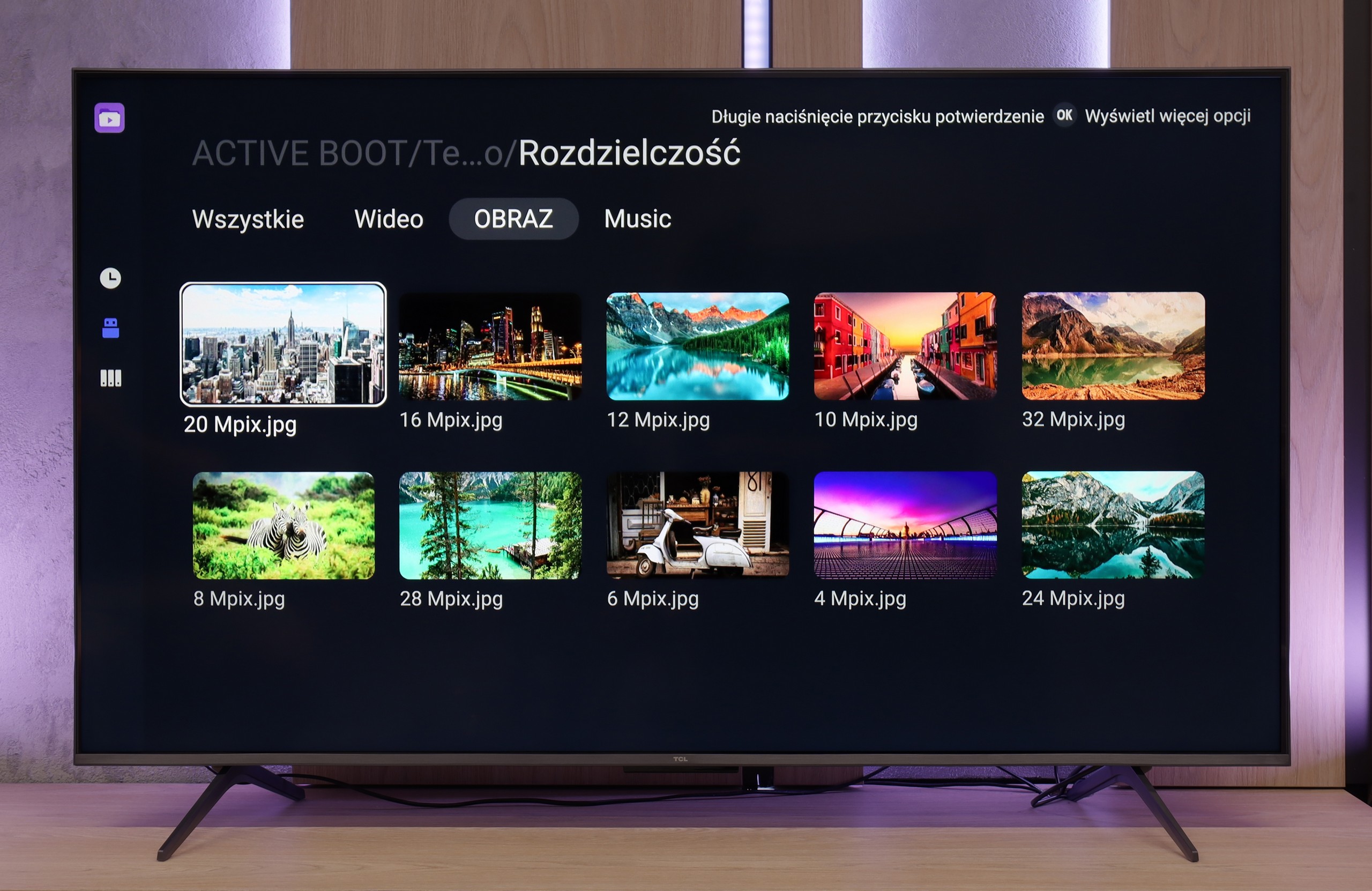
The built-in media player in The Frame handles most popular video and audio formats without major issues. Video files, even those with our added subtitles, play smoothly and without interruptions. The same goes for audio files – there are no major surprises here either. The situation is somewhat worse when it comes to photo format support. The built-in player has some limitations and does not support all possible types of graphic files. However, nowadays most people use wireless photo transfer, so this will not be a major problem for many users.
The built-in media player in the TCL C6K performs really well – practically all popular file formats work without major issues. There are, of course, minor exceptions, especially with less common codecs or atypical video file configurations, but in everyday use, this is rarely noticeable. The biggest advantage, however, is that the TV runs on Google TV, which provides full freedom in choosing additional software. If someone encounters a file that the standard player cannot handle, it is enough to install an alternative – such as VLC – and the problem disappears.
Apps
8.7/10
9.6/10














































Sound
5.8/10
6.5/10
- Subjective sound quality:5.8/106.5/10
- Dolby Digital Plus 7.1:
- Dolby True HD 7.1:
- Dolby Atmos in Dolby Digital Plus (JOC):
- Dolby Atmos in Dolby True HD:
- DTS:X in DTS-HD MA:
- DTS-HD Master Audio:
The sound in The Frame is... well, quite average. The slim design of the television, while impressive, does not provide much space for decent speakers. As a result, the sound is flat and lacking in dynamics – just like most televisions in this category. Samsung is clearly aware of this, as it has a special series S of soundbars in its offer, created specifically for the "lifestyle" line of televisions to which The Frame belongs.
In terms of audio, the TCL C6K performs quite well. The manufacturer has been boasting about its collaboration with the Onkyo brand for several years, and it indeed reflects in the sound quality. The audio is pleasant, with clear mids and quite a clean high end, and the whole sound gives the impression of being well balanced. Of course, this will not replace a full-fledged soundbar, especially in terms of bass depth, but for built-in speakers in a TV from this price segment – it's really very good.


